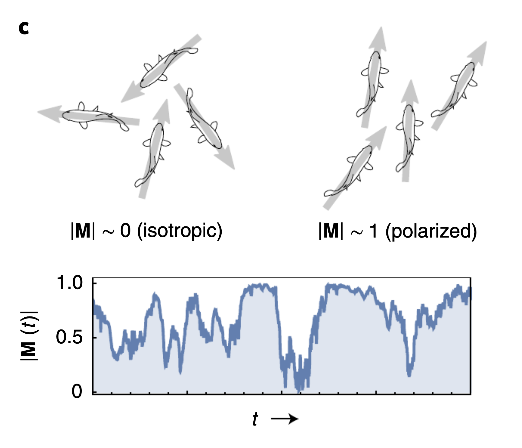This is the FIRST experimental work of our 'theory-lab'. Obviously, this is exciting.
Thread. @iiscbangalore

Each individual has only limited local information about surroundings. Yet they show these fascinating patterns. 2/n
This has been a question of substantial work over last few decades, and we provide some new insights here. 3/n
They show that organisms don’t need complex rules to exhibit collective motion. 4/n
[Pic below is Fig 1 of Vicsek et al 1995 PRL]

We show that in a species called karimeeen (Etroplus suratensis)
(i) fish just copy the direction of a (nearby) random fish, or
(ii) they turn a bit randomly. 6/n
In fact, fish school studies by @JHerbertread, @GTheraulaz etc also show a similiar simpl rule of interactions in other fish species. 8/n
We show that schooling in this fish is a rare empirical example of a phenomenon well studied in non-equilibrium stat physics: ‘noise-induced phase transitions’.
But what is this? Let's dig in a bit 9/n
We use karimeen (Etroplus suratensis) -- a popular edible fish in western coast of southern India and put them in a fish tank.

[This is from fig 1 of our paper.]

We then plot this quantity as a function of time. Crucially, we retain all information -- not just mean but also how fluctuations are occurring over time.

I think this is one of the coolest part of the paper - because unlike most papers that intuitively derive a model or equation, here we let the data talk!

i. when fish are ordered, even random things that they do, like copy one other, doesn't change the overall behaviour very much
ii. when the fish are moving in a misaligned state, the fluctuations are actually high.
If you are interested, you can send me an email to get the pdf OR check this link: rdcu.be/b2pgG
All codes/data are available via: doi.org/10.5281/zenodo…










